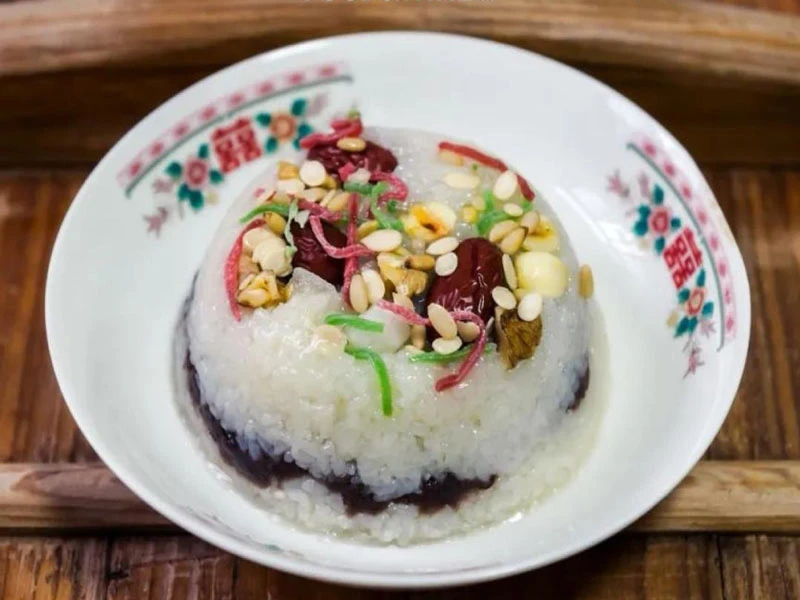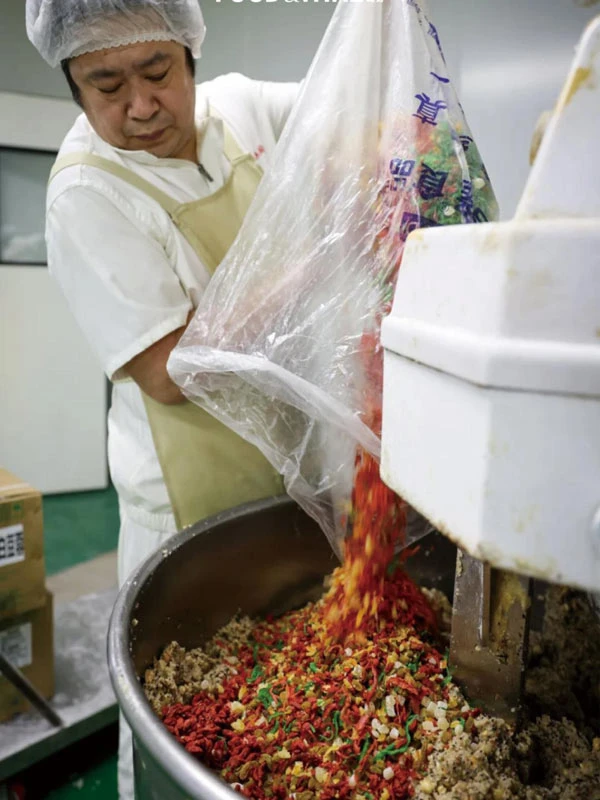Mid-Autumn Festival is just around the corner, and one can't help but wonder: will mooncakes still feature the once-iconic Green-red julienned orange peel (青红丝)? For many, this ingredient evokes memories of traditional pastries that, in the modern era, seem to be fading into obscurity.
Green-red julienned orange peel , once an essential garnish in mooncakes, is a mix of thinly sliced candied peels—green from spinach or herbs, red from red yeast rice or dyes. Its earliest documented use dates back to the Qing Dynasty, mentioned in records of Shandong's farming activities. Descriptions of traditional mooncakes included a variety of nuts, seeds, and, crucially, these vibrant candied peels. By the time of the Republic of China, regional records across the country consistently included this ingredient in local pastries.
Whether it's the "sugar oil flatbread" of Shaanxi, filled with red sugar and green silk, or the "Baozi cakes" of Shandong, a crunchy sweet made from rice flour and layered with sugar and candied peels, Green-red julienned orange peel adorned all kinds of desserts. The brightly colored garnish was a symbol of festivity and sweetness, making its appearance in everything from celebratory feasts to daily treats.

Going even further back in history, references to this beloved garnish appear in the literary classics of the Ming and Qing Dynasties. For instance, in Jin Ping Mei, a character is seen holding delicacies like sweet glutinous rice cakes topped with red and white sugar fillings and sprinkled with Green-red julienned orange peel .
The Transformation of Green-red julienned orange peel
Throughout the centuries, the composition of Green-red julienned orange peel has evolved. Originally, green silk was made from candied green plums or apricots, and red silk from sugared rose petals. These garnishes not only added bright colors but also carried nuanced, aromatic flavors. One of the most famous examples was the "Self-Rising Red" mooncake of Beijing, made with rose petal strips and dried fruits.
However, by the 1990s, the traditional ingredients had mostly been replaced. The candied plums and roses gave way to citrus peels, typically orange or tangerine skins. These were cleaned, soaked in lime water to toughen them, and then dyed—spinach juice for the green, red yeast for the red. Though still flavorful, they were no longer the refined delicacies they had once been. As production became industrialized, cheaper alternatives were used. The citrus peels were eventually replaced by watermelons, winter melons, and even radishes, all dyed and candied in a similar fashion.
The result? A new generation of Green-red julienned orange peel —less fragrant, with a plasticky sweetness and texture—that left many consumers unimpressed.
The Nostalgia of a Bygone Era
Despite its fall from grace, Green-red julienned orange peel once held a cherished place in the hearts of the older generation. These brightly colored candied peels were often seen during festive occasions, symbolizing abundance and joy. In Southern China, dishes like the traditional Eight Treasures Rice featured a topping of Green-red julienned orange peel on sticky rice mixed with red dates, lotus seeds, and other sweet ingredients. Similarly, in Shanxi, there was a famous dish called the "Ten Great Bowls," which featured a cooling dessert made of rice flour, date paste, and a sprinkle of Green-red julienned orange peel .
During the Mid-Autumn Festival, mooncakes were the true showcase for this colorful garnish. The holiday was an occasion to indulge in these sweet treats, and Green-red julienned orange peel was the star, decorating the mooncakes with its vibrant colors. Even during the colder months, traditional snacks like Laba porridge—a combination of various grains, dried fruits, and nuts—were topped with Green-red julienned orange peel to symbolize prosperity for the new year.
In the past, Green-red julienned orange peel was more than just a decoration; it was a sign of prosperity. It's no surprise then that in the early 20th century, the price of these candied peels in certain regions of China could be higher than that of pork lard. In some places, it even inspired folk songs.
Today, younger generations often view it a relic of the past that they would rather avoid. The decline in quality, paired with its overuse in factory-produced pastries, has tainted its reputation. The shift from natural ingredients like rose petals to industrially dyed citrus peels, and finally to candied scraps of melon rind, has robbed the garnish of its original charm. Instead of the floral aroma and rich citrus flavor, today's Green-red julienned orange peel tastes artificial, with an odd texture that many describe as unpleasantly chewy.
Its association with the five-nut mooncake—another ingredient often reviled by younger consumers—hasn't helped matters. Although the combination of nuts like walnuts, almonds, and pumpkin seeds is by no means bad, the addition of Green-red julienned orange peel has become a sticking point. For many, the mix of sugary peels with savory nuts feels like an odd pairing that doesn't quite work.
A Lost Treasure or an Acquired Taste?
The future of Green-red julienned orange peel seems uncertain. Once a cherished ingredient that symbolized prosperity and festivity, it has now become something of a forgotten relic, viewed with skepticism by today's more discerning eaters. However, like many other traditional ingredients, it may only take a renewed appreciation for artisanal craftsmanship to bring it back into favor. In a time when nostalgic foods are making a comeback, perhaps Green-red julienned orange peel could be reimagined in ways that honor its rich history while adapting to modern tastes.
As the Mid-Autumn Festival approaches, the question remains: will this year's mooncakes feature the iconic Green-red julienned orange peel , or will it continue to fade into the background of culinary history? Only time will tell if this once-beloved garnish will regain its former glory.



